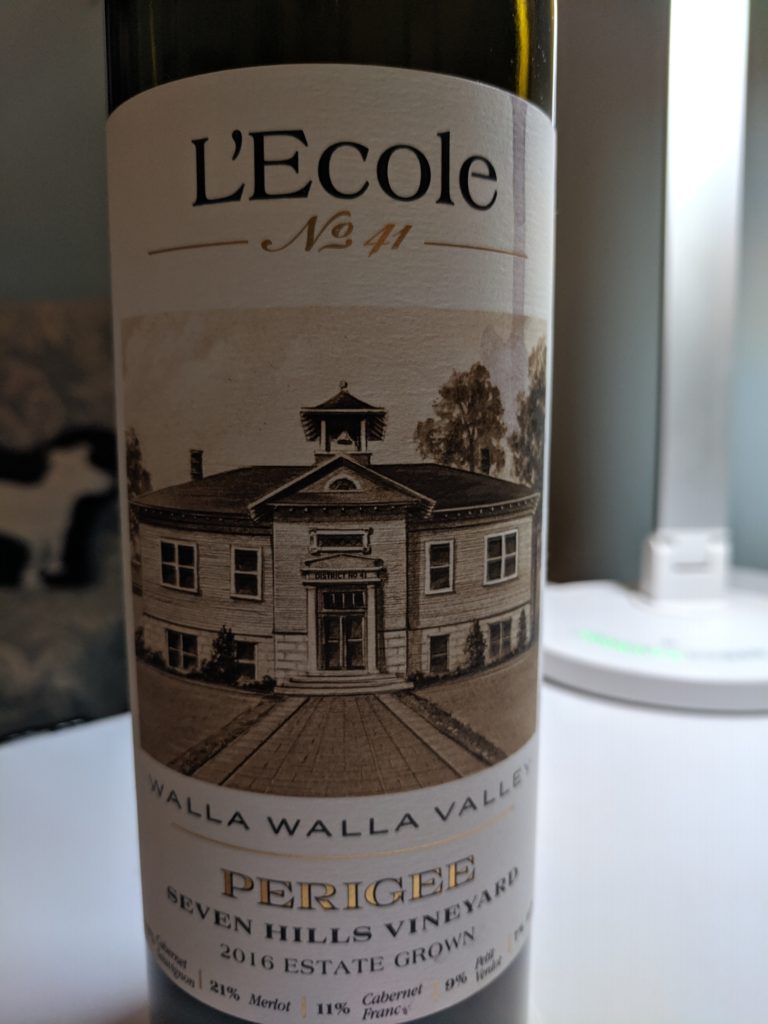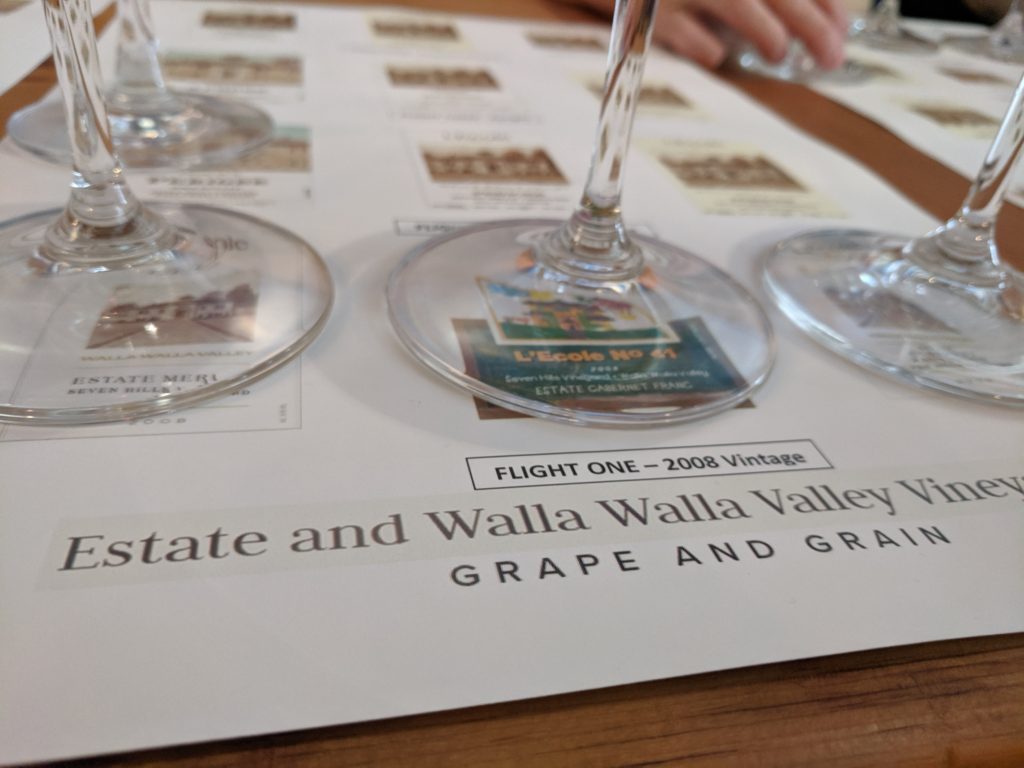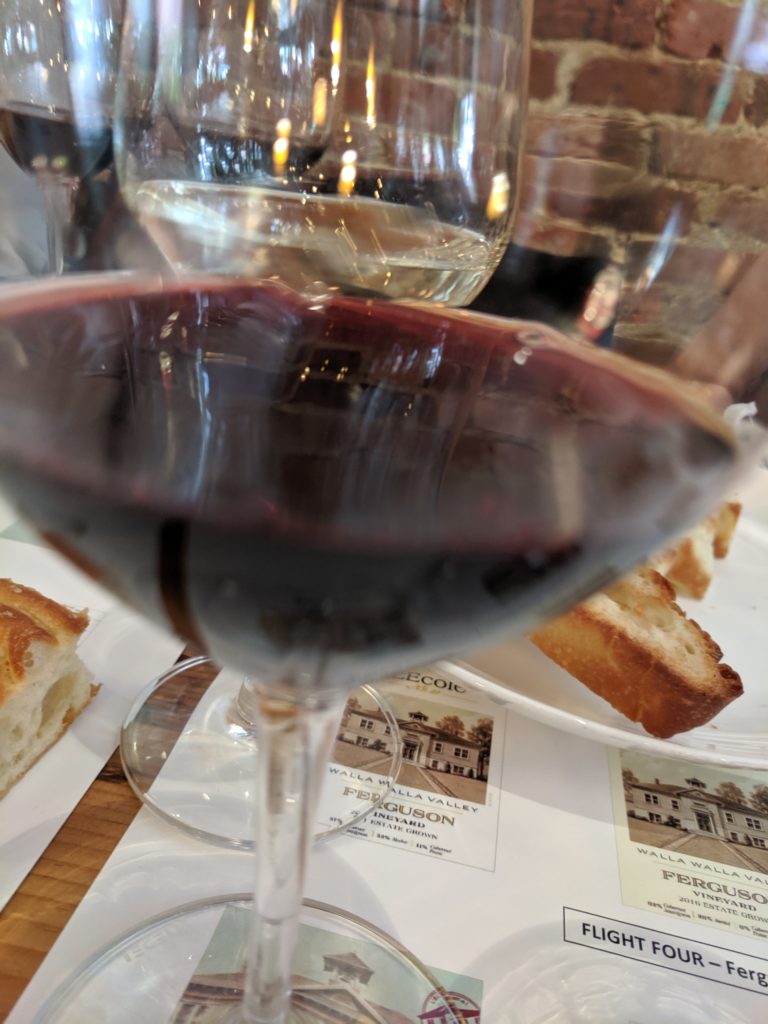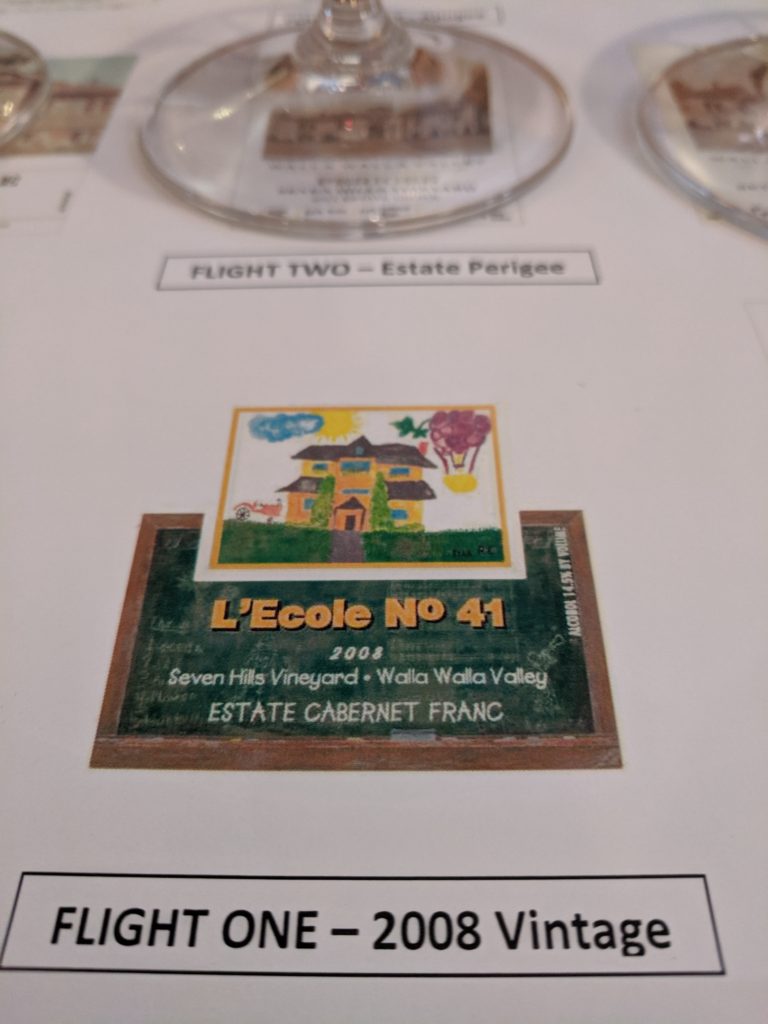
Ensconced in an old schoolhouse from which it takes its name, L’Ecole 41 was Walla Walla’s third winery and is at the epicenter of Washington wine. The family-owned winery was established in 1983 by Jean and Baker Ferguson, two Walla Walla natives who started growing grapes and making wine as a retirement project. Five years later, their daughter, Megan, and son-in-law, Marty Club, came back to the valley to take over what had become a fledgling business. Today, the pioneering winery has become widely recognized for producing beautiful wines.
L’Ecole 41’s makes wines from the larger Columbia Valley, but its higher end wines, crafted from top vineyards in the triangular-shaped Walla Walla Valley, truly speak to the terroir of this region. Situated in the southeastern corner of Washington State, Walla Walla provides a high desert climate, with rainfall limited to the winter months. Thanks to the hot, dry conditions, red wines account for 95% of the local production. Yet, in spite of the daily heat, the elevation and large diurnal shift result in a bright, natural acidity that has become a hallmark of all Washington wines. And, the sandy soils mean that the vines don’t need to be grafted onto American rootstocks.
I first became aware of the wines of L’Ecole 41 when I tasted their Semillon at the Society of Wine Educators’ conference back in 2005. But, given the time that had passed and my lack of knowledge of their highly regarded reds, I was intrigued when I received an invitation to taste through several terroir-focused flights.
With 36 years of winemaking experience, L’Ecole 41 now takes a uniform approach to each vintage. Accordingly, they follow the same vineyard and winemaking practices from year to year, which permits the terroir to show through even more than if they were to adapt to each growing season.
Our first flight focused on the Seven Hills Vineyard, one of L’Ecole 41’s estate vineyards situated in the southern perimeter of the valley. The 128-acre vineyard is comprised of wind blown loess (talc) soils, with vines grown on the North-facing slope due to the high heat. Jointly owned with several other wineries, it is planted to Bordeaux varieties and Syrah. This initial introduction featured Merlot, Cabernet Franc and Cabernet Sauvignon, all from the cool, 2008 vintage.
We next turned our attention to Perigee, a Cab-driven, Bordeaux blend, also sourced from the Seven Hills Vineyard. We tasted through three different vintages varying from the cool 2006 and the even cooler 2011 to the warm 2016. Despite vintage variation, all of these wines displayed a meatiness, along with dried herbs and robust concentration. Not surprisingly, 2006 showed some development with more tertiary aromas and flavors while the 2011 was the most tart and the 2016 offered up riper fruit notes.

The third flight featured Apogee, a single vineyard, Bordeax-blend wine, produced from grapes from the Pepper Bridge Vineyard. L’Ecole 41 was the first winery to make wine from this vineyard, which is on the floor of the valley, on the alluvial flood silts from the previous ice age. Since the 2011 vintage was too cool to produce this wine, we tasted the 2006, 2010 and 2016 vintages.
Last, but not least, we tasted through wines from the Estate-based Ferguson Vineyard. Found at the top of the crest, at 1400 feet in elevation, Ferguson is home to one of the most volcanic soils in Washington. The vineyard’s 18 inches of wind-blown loess sit on top of a two-mile- deep layer of fractured basalt, remaining from ancient lava flows. With its super windy and super sunny conditions, the 42-acre vineyard was planted in 2008-09 to Bordeaux varieties. In addition to producing Ferguson, the vineyard is also occasionally used to make a pure varietal wine.
We tasted Ferguson 2011 (its first vintage) as well as the Ferguson 2016, as well as a very powerful Cabernet Sauvignon 2014 from this vineyard. The latter was very structured, with firm tannins, dark, black fruit and bright acidity, while the more youthful Ferguson was even fresher, with more red notes; neither was overly dense or extracted, nor was the limited production (300 cases) Cabernet Sauvignon.
At price points ranging from $37 for the Estate Merlot wines to $65 for the Estate Ferguson, these are definitely premium wines. However, they over-deliver in terms of their quality and provide excellent value for such age-worthy, well-made wines that will delight your palate.



beautifully written; so glad you were able to experience these wines!
Thank you! Glad you are pleased with the coverage. It was a pleasure to get to know L’Ecole!